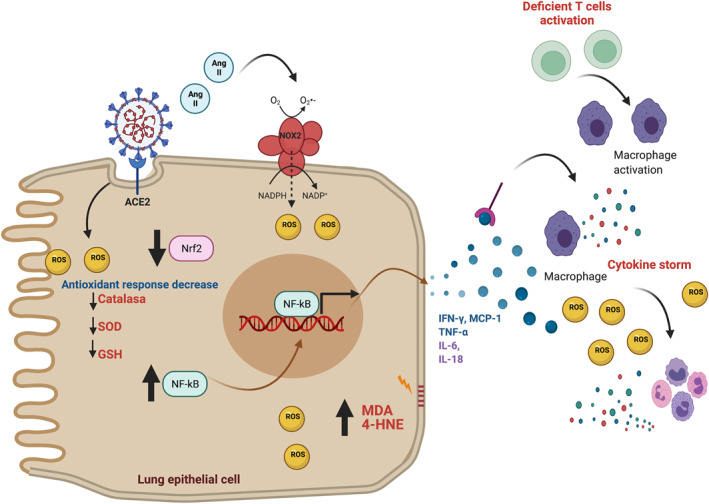FIGURE 2.

Inflammation and reactive oxygen species (ROS) overproduction during coronavirus disease 2019 (COVID‐19) infection. The interaction between angiotensin convertase enzyme 2 (ACE2) receptor and severe acute respiratory syndrome coronavirus type 2 (SARS‐COV‐2) generates ROS through angiotensin II (Ang II) because the latter stimulates NADPH oxidase 2 (NOX2). Moreover, the antioxidant response decreases through SARS‐CoV‐2 infection by lessening catalase, superoxide dismutase (SOD), and glutathione (GSH). ROS overproduction oxidises lipids in the cell membranes, generating the products of lipid peroxidation malondialdehyde (MDA) and 4‐hydroxinonenal (4‐HNE), which are increased In COVID‐19 deceased patients. On the other hand, SARS‐CoV‐2 activates the nuclear factor kappa B (NF‐κB), inducing the secretion of several cytokines and chemokines that include interferon‐gamma (IFN‐γ), tumoral necrosis factor‐alpha (TNF‐α), interleukin (IL) 6 (IL‐6), IL‐18, and monocyte chemoattractant protein 1 (MCP‐1). The latter and the deficient inactivation of T cells prompt macrophages activation, inducing the production of other cytokines, triggering cytokine storm accompanied by ROS overproduction. The figure was created with BioRender
